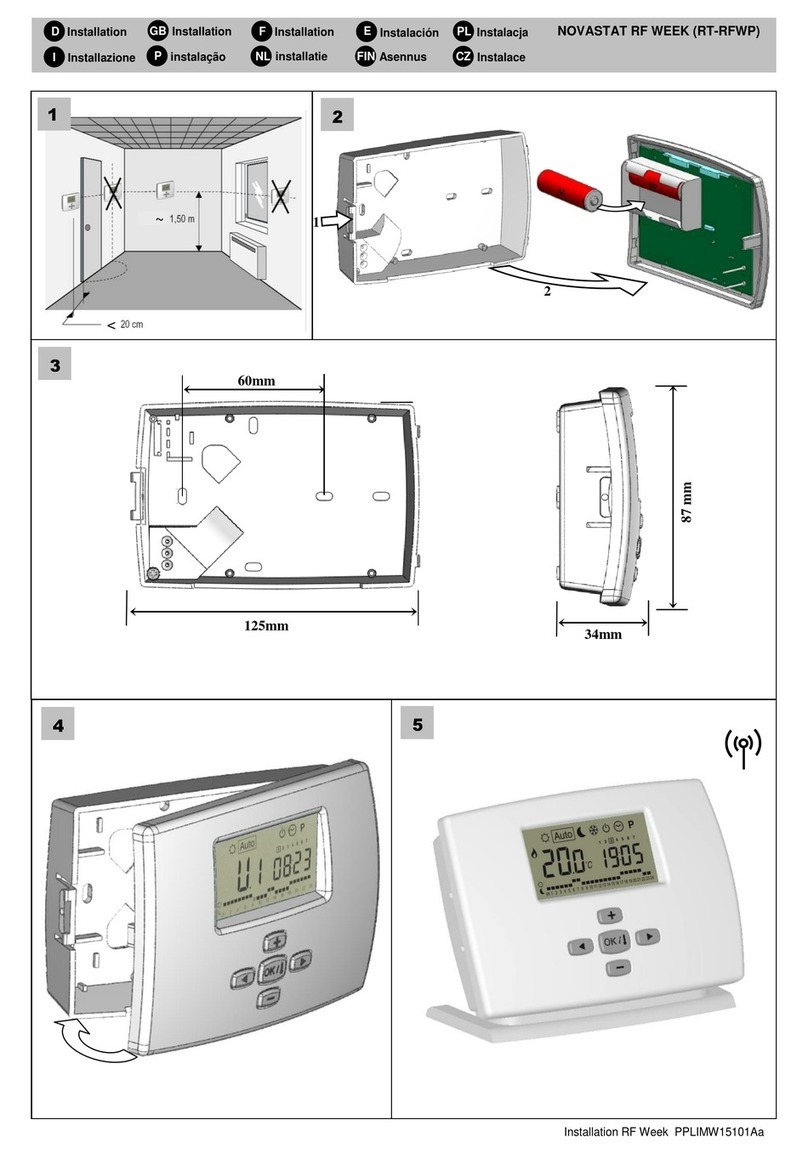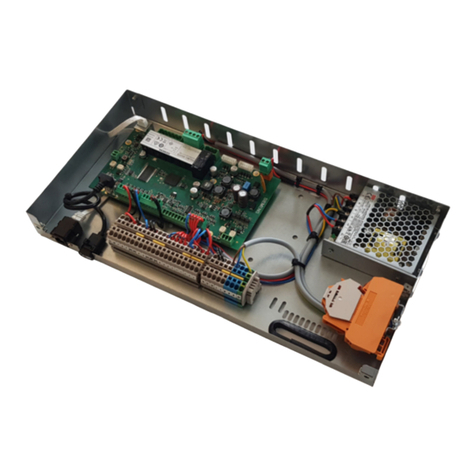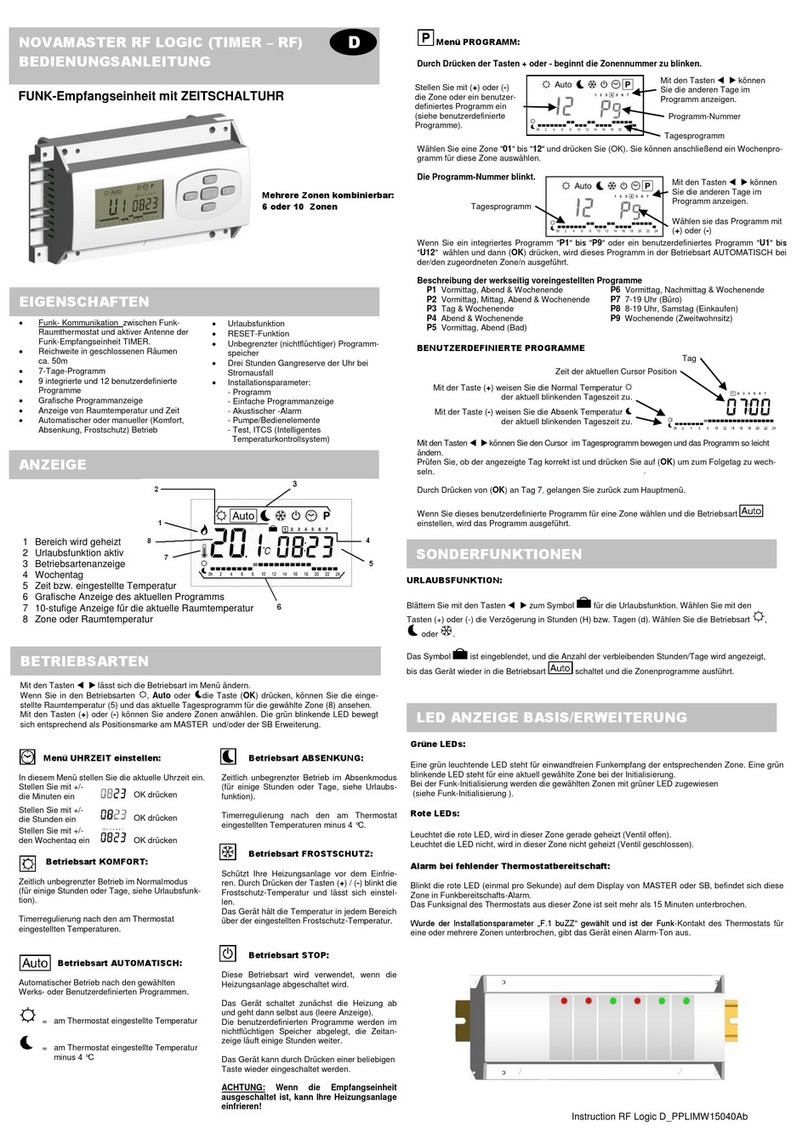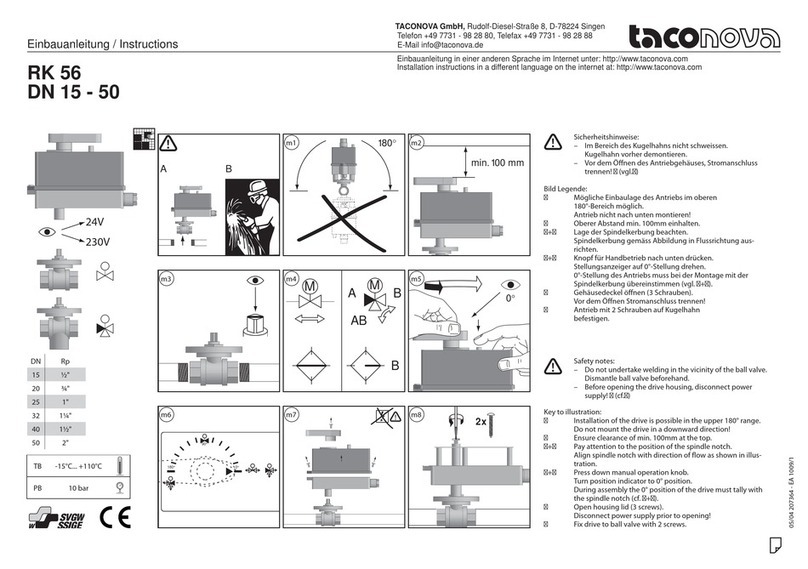A. - Safety instructions 3
A.1. - EC declaration of conformity 3
A.2. - General instructions 3
A.3. - Explanation of symbols 3
A.4. - Changes to the unit 3
A.5. - Warranty and liability 4
A.6. - About the controller 4
A.7. - Scope of supply 4
A.8. - Disposal and pollutants 4
B. - Description of controller 5
B.1. - Specifications 5
B.2. - Temperature resistance table
for Pt1000 sensors 5
C. - Installation 6
C.1. - Wall installation 6
C.2. - Electrical connection 7
C.3. - Installing the temperature sensors 8
C.4. - RC 21 Remote adjuster with thermostat 9
D. - Terminal connection 10
D.1. - Terminal connection 10
D.2. - Terminal connection diagram 10
D.3. - Hydraulic variants / Schemes / Systems11
E. - Operation 19
E.1. - Display and input 19
E.2 Commissioning help 19
E.3 Free commissioning 20
E.4 Menu sequence and menu structure 20
1. - Measurement values 21
2. - Statistics 21
2.1. - Operating hours 21
2.2. - Heat output 21
2.3. - Graphic overview 21
2.4. - Message log 21
2.5. - Reset/clear 21
3. - Operating modes 22
3.1. - Automatic 22
3.2. - Manual 22
3.3. - Off 22
3.4. - Fill system 22
4. - Settings 23
4.1. - Tmin S (X) 23
4.2. - Tmax S (X) 23
4.3. - Tmax SB 23
4.4. - T Solar S (X) 23
4.5. - Priority S(X) 24
4.6. - T-priority 24
4.7. - Loading time 24
4.8. - Increase 24
5. - Protections / Protective functions 25
5.1. - System protection 25
5.2. - Collector protection 25
5.3. - Recooling 25
5.4. - Frostschutz 26
5.5. - Seizing protection 26
5.6. - Collector alarm 26
6. - Special functions 27
6.1. - Program selection 27
6.2. - Speed control 27
6.2.1. - Variant 27
6.2.2. - Type of pump 27
6.2.3. - Pump menu 28
6.2.3.1. - Pump 28
6.2.3.2. - Output Signal 28
6.2.3.3. - PWM off 28
6.2.3.4. - PWM on 28
6.2.3.5. - PWM Max 28
6.2.3.6. - 0-10V off 28
6.2.3.7. - 0-10V on 28
6.2.3.8. - 0-10V Max 28
6.2.3.9. - Speed when „On“ 28
6.2.3.10. - Show signal 28
6.2.4. - Purging time 29
6.2.5. - Sweep time 29
6.2.6. - max. speed 30
6.2.7. - min. speed 30
6.2.8. - Setpoint 30
6.3. - Solar bypass 30
6.3.1. - Variant 30
6.3.2. - Bypass (sensor) 30
6.4. - Thermostat 31
6.4.1. - TH Set 31
6.4.2. - TH hysteresis 31
6.4.3. - Thermostat sensor 1 31
6.4.4. - Thermostat sensor 2 31
6.4.5. - T eco 31
6.4.6. - Storage 31
6.4.7. - Energy saving mode 31
6.4.8. - Periods 31
6.5. - Cooling 32
6.5.1. - Co T set 32
6.5.2. - Co hysteresis 32
6.5.3. - Cooling (sensor) 32
6.5.4. - Periods 32
6.6. - Return flow increase 32
6.6.1. - RF Tmax 32
6.6.2. - T return flow 32
6.6.3. - Return flow (sensor) 32
6.6.4. - Storage (sensor) 32
6.7. - Collector field cooling 33
6.7.1. - Tmax field 33
6.7.2. - Hys min 33
6.7.3. - Hys max 33
6.7.4. - Field cooling sensor 33
6.8. - Anti Legionella 34
6.8.1. - AL T set 34
6.8.2. - AL residence time 34
6.8.3. - Last AL heat 34
6.8.4. - AL sensor 1 34
6.8.5. - AL Sensor 2 34
6.8.6. - AL-times 34
6.9. - Heat transfer 35
6.9.1. - T Heat transfer 35
6.9.2. - Setpoint 35
6.9.3. - HT Tmin 35
6.9.4. - HT Source (sensor) 35
6.9.5. - HT Drain (Target sensor) 35
6.10. - Difference 36
6.10.1. - T difference 36
6.10.2. - DF source (sensor) 36
6.10.3. - Diff Tmin 36
6.10.4. - DF Drain (sensor) 36
6.10.5. - DF Tmax 36
6.11. - Solid fuel boiler 37
6.11.1. - SF Tmax 37
6.11.2. - SF Tmin 37
6.11.3. - T SF 37
6.11.4. - Boiler sensor 37
6.11.5. - Storage sensor 37
6.12. - Error message 37
6.13. - Pressure monitor 38
6.13.1. - Pressure monitor 38
6.13.1.1. - RPS1 / RPS2 38
6.13.1.2. - Pmin 38
6.13.1.3. - Pmax 38
6.14. - Booster pump 38
6.14.1. - Filling time 38
6.15. - Parallel operation R (X) 38
6.15.1. - Delay 38
6.15.2. - Followup time 38
6.16. - Always on 39
6.17. - Heating circuit 39
6.17.1. - Room set day 39
6.17.2. - Room set night 39
6.17.3. - Room sensor 39
6.17.4. - Periods 39
6.18. - Heat quantity 40
6.18.1. - Flow sensor (X) 40
6.18.2. - Return sensor 40
6.18.3. - Anti freeze type 40
6.18.4. - Glycole percentage 40
6.18.5. - Flow rate (X) 40
6.18.6. - Offset T 40
6.18.7. - VFS (X) 40
6.18.8. - VFS - Position 40
6.18.9. - Reference sensor 40
6.18.10. - Pressure monitor 41
6.18.11. - Pressure monitor 41
6.18.11.1. - RPS1 / RPS2 41
6.18.11.2. - Pmin 41
6.18.11.3. - Pmax 41
6.19. - Sensor calibration 41
6.20. - Commissioning 41
6.21. - Factory settings 41
6.22. - SD-Card 42
6.22.1. - Logging 42
6.22.2. - Free storage 42
6.22.3. - Load configuration 42
6.22.4. - Save configuration 42
6.22.5. - Firmware update 42
6.22.6. - Unmount 42
6.23. - Start aid function 42
6.24. - Time and date 42
6.25. - Daylight saving time 42
6.26. - Sleep mode 43
6.27. - Ethernet 43
6.27.1. - Ethernet 43
6.27.2. - MAC Adress 43
6.27.3. - TCP/IP Adress 43
6.27.4. - Network Mask 43
6.27.5. - Gateway 43
6.27.6. - Login 43
6.28. - Temperature unit 43
7. - Menu lock 44
8. - Service values 44
9. - Languages 44
Z.1. Malfunctions with error messages 45
Z.2 Replacing the fuse 46
Z.3 Maintenance 46
Table of content





































